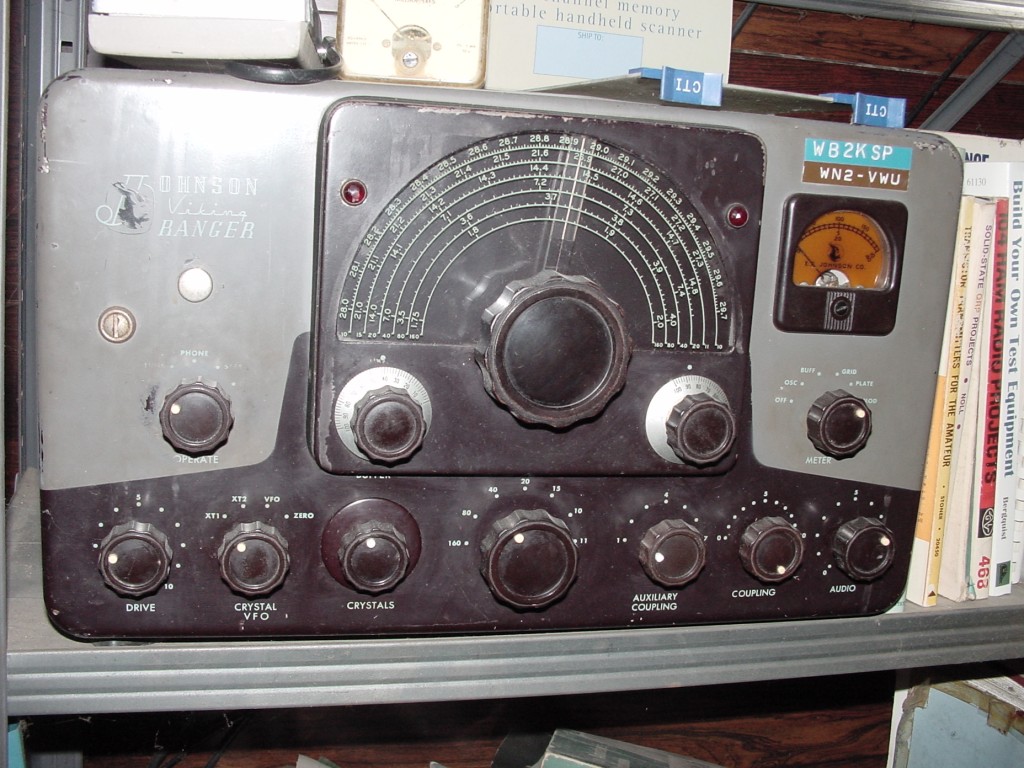After a long hiatus, I’m back. A little. We’ll see… I’m planning to write on both radio and Linux/Cloud computer topics, but I’m busy with a job search, so read on.
I’m back on the air for the first time since I moved into my base QTH a few years ago. It’s a nice place, but not for radio propagation. In that respect, it’s down in a hole and difficult to raise any kind of antenna. But, with the end of winter, and my need for radio, I decided to go for it.
I put up a wire loop antenna, and I’m using equipment documented elsewhere on this site.
The loop antenna is one of a number of compromise antennas I plan to try out at this site to see which “compromise” antenna works the best. It’s made from 100′ of stranded, copper wire arranged as a somewhat flattened circle arranged parallel to the ground. It’s in the range of 12′ to 14′ high. The antenna terminates with an SGC SG-239 automatic antenna tuner, with a 50′ coax run to the rig.
The SGC SG-239 does a great job of tuning the antenna to match the feedline, maintaining low SWR at the rig, along these lines:
| 80 Meters |
less than 1.5 |
| 40 Meters |
2.5-3 |
| 20 Meters |
less than 1.5 |
| 15 Meters |
untested |
This is, of course, not an optimal antenna by any means. It’s too close to the ground to get any low-angle take-off, but even if it did, there would be nowhere for the radiation to go being as I’m down in a hole. Conversely, there’s a lot of near-vertical radiation. This is OK because by goal is to get signal up where there’s somewhere for it to go and get some high-angle ionospheric propagation to get my signals out of the hole.
What about the “closed loop” aspect? Well, the SGC tuner can handle it, for starters. Additionally, I’m in a high-noise area, and the closed-loop configuration keeps things quieter than an open antenna configuration would. The antenna is also forced to operate in the M (magnetic) plane. Most of the noise is on the E (electronic) plane. Both the TenTec rigs have no defense against noise, so this seemed a good way to go. I’ll see how this worked out as I try other antenna configurations and compare.
The rigs I’ve been using up to this point are a TenTec Century21 (CW only), in mint condition, and a TenTec Triton II, in nearly mint condition. I’m selling the Triton II, which delivers 100 watts output on 80-10 meters on CW and SSB phone. Contact me at my_callsign at arrl dot net if you’re interested in buying it. Both of these rigs are very comfortable to operate, and have no digital circuitry. Both rigs are permeability tuned. This means that main tuning is accomplished by moving a slug through a coil, affecting the inductance of the coil in a smooth and mechanically stable way. A common problem with rigs tuned this way is that, when stored for long periods of time, the lubricant for the moving slug can stiffen, or even harden. In the worst case, it effectively glues the slug in position. After a long storage time, like these rigs have endured, the rig needs to be thoroughly warmed up. This softens up the lubricant. Then, the VFO dial needs worked gently from end to end of the tuning range. This loosens up and redistributes the lubricant. With a little exercise of this kind, the VFO mechanism starts to work smoothly across the entire tuning range.

